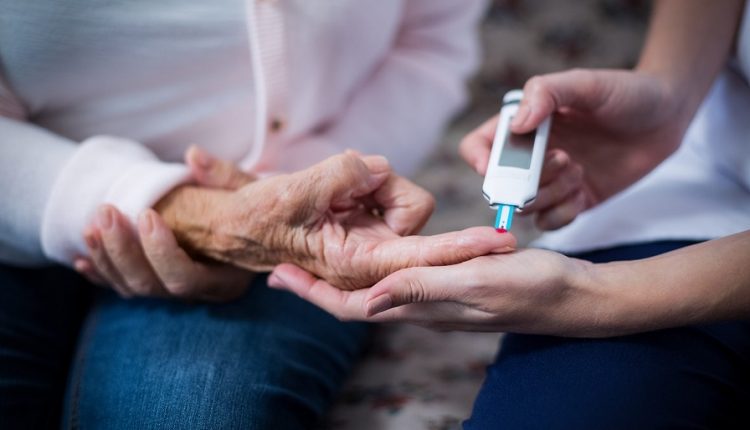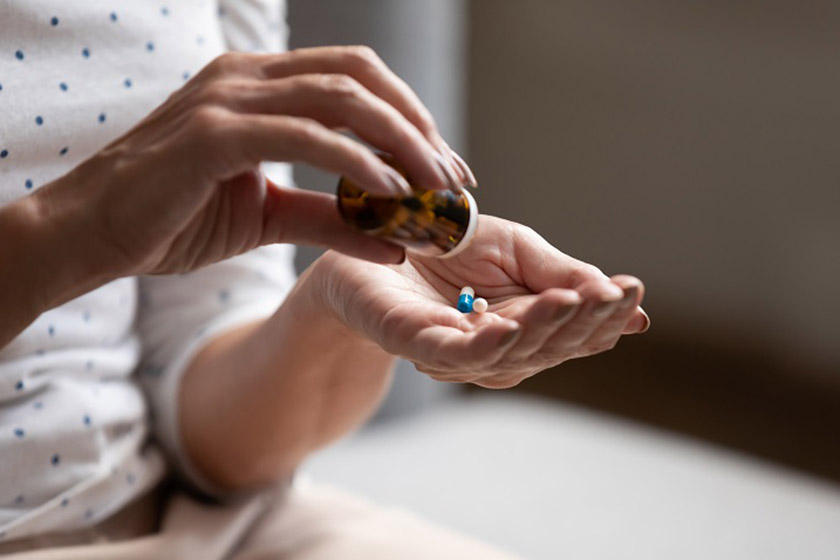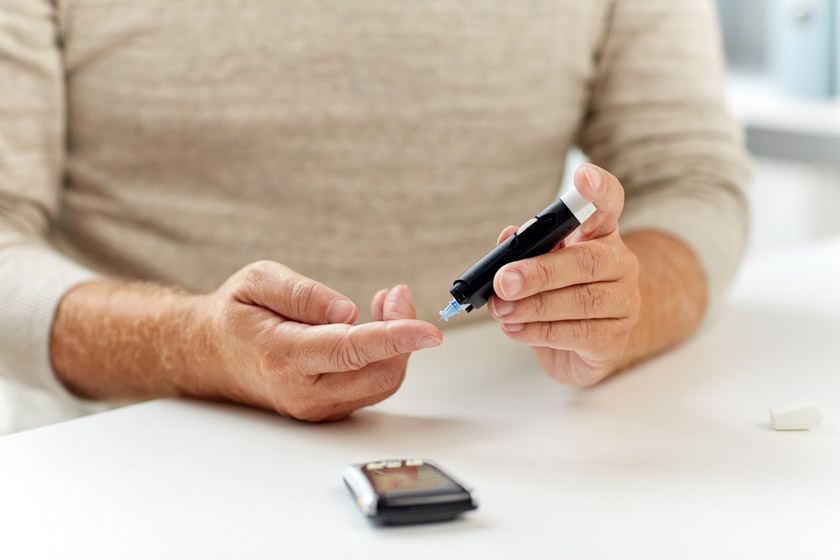
Believe it or not, nearly half of Americans 65 and older have prediabetes, which means that more than 25 million seniors are at risk for developing type 2 diabetes. Yes! This is a staggeringly high number, considering another 25 percent of senior citizens already have diabetes.
Diabetes is expected to rank the seventh leading cause of death worldwide by 2030.
Diabetes is caused by high blood glucose, also known as blood sugar levels. By tracking the normal blood sugar in seniors, one can delay or prevent type 2 diabetes, which is the most common form of diabetes in older adults. Also, if you have diabetes, you can take steps to manage the condition and prevent diabetes-related health problems.
But now the question is, what is a normal blood sugar range in seniors? The following article will thoroughly discuss diabetes, the normal, high and low blood sugar ranges for seniors, ways to control blood sugar in old age, and all you may need to know about diabetes.
Contents
- 1 Diagnosis of Diabetes in Seniors
- 2 What Is the Normal Blood Sugar Level in Healthy and Diabetic Seniors?
- 3 How to Control Blood Sugar in Old Age
- 4 Diet for Seniors Diabetes
- 5 Maintaining Healthy Blood Sugar for Old People
- 6 Types of Diabetes for Seniors
- 7 Care Measures for the Diabetic Seniors
- 8 Final Words
Diagnosis of Diabetes in Seniors
Early diagnosis of diabetes is essential to your health. Early treatment will help prevent serious complications. In routine tests, the blood sugar level indicates whether you have diabetes or not. In such tests, your blood is drawn eight hours after you haven’t eaten or drunk. A normal fasting blood glucose level should be below 100 mg/dL. Therefore, if your fasting blood sugar level is more than 110 mg, you have diabetes.
Before testing your blood sugar test, you can determine if you have diabetes. Some of the most common symptoms include:
- Losing weight despite a regular diet
- Increased frequency of urination
- Thirst despite drinking a lot of water
- Hyperglycemia without eating
- Symptoms of Hypoglycemia (Low Blood Sugar)
- High blood sugar in old age
Signs of Low Blood Sugar in Old Age

Hypoglycemia or low blood sugar is very dangerous in seniors since it can make the person unconscious and put them into a coma. Some signs of low blood sugar in seniors are as follows:
- Hardening of blood vessels and reduced blood flow
- Decreased temperature: This happens more in places where the ambient temperature is low.
- Paleness
- Dizziness and vomiting
- Feeling hungry
- Sweating
- Excess fatigue
- Signs of Hyperglycemia (High Blood Sugar)
Signs of High Blood Sugar in Seniors
Just as low blood sugar is dangerous, higher blood sugar can lead to severe side effects. Symptoms of hyperglycemia include:
- Excessive thirst and water consumption
- Dry mouth
- Higher Frequency of Urination
- Weakness and lethargy
- More sleep
- Weight loss
- Blurred vision
What Is the Normal Blood Sugar Level in Healthy and Diabetic Seniors?

- Fasting state: for healthy people (less than 100 mg/dL), for diabetics (above 126 mg/dL).
- Before lunch and dinner: for healthy people (less than 110 mg/dL), for diabetics (between 70-130 mg/dL).
- Up to 2 hours after meals: for healthy people (less than 140 mg/dL), for diabetics (less than 200 mg/dL).
- Before bed: for healthy people (less than 120 mg/dL), for diabetics (less than 150 mg/dL).
If a person’s fasting blood sugar is between 100 and 125, they have prediabetes.
How to Control Blood Sugar in Old Age
For diabetes management, you have to follow a series of do’s and don’ts and change your lifestyle. Bellow, we will discuss the methods of controlling blood sugar in seniors.
Blood Sugar Pills

Eighty to ninety percent of seniors diagnosed with diabetes after age 60 can be successfully treated without insulin.
If you are worried about taking your medicine regularly, put the necessary daily or weekly tablets in a particular container available and easily taken.
The older you are, the more likely you are to take medications that may interfere with one another. Therefore, it is necessary to talk to the doctor about other medicines you are taking before receiving blood sugar pills.
Insulin
Many seniors receive insulin injections, and the doctor determines the amount of insulin needed to inject. However, some seniors have vision problems and slowness of movement. If it is difficult for an older adult to draw insulin into a syringe or inject it, doctors should prescribe the most uncomplicated and effective insulin regimen.
Suppose a diabetic senior can draw insulin into a syringe and inject it. It is sufficient to take care of the daily insulin intake alone, but if the diabetic older adult cannot inject insulin alone, the required daily or weekly dose should be injected by a nurse.

Diet for Seniors Diabetes
There are specific rules regarding diet and blood sugar in old ages. Seniors with diabetes should eat healthy foods and snacks at certain times, and they should increase the number of their daily meals to 6 units. Men should not consume sugary foods in the main meals from 4 to 5 units and women from 3 to 4 units.
Consumption of sugar-containing food groups between meals in both sexes should not exceed 1 to 2 units. An overnight snack is best made from protein such as cheese or milk that comes with bread. They should also include the best fruits for seniors with diabetes in their diet.
Maintaining Healthy Blood Sugar for Old People

A person with diabetes may require both lifestyle adjustments and medicine over time. A health care team will work with you to develop a diabetes management plan once you’ve been diagnosed with diabetes. Here are some tips for older adults to stay healthy while living with diabetes:
- Take your medicines on time with precise dosage. Silvers Pill Reminder can help you manage your medicines.
- Maintain a healthy diet.
- Be more active.
- Discuss your concerns with your doctor.
- Get pneumonia vaccine and flu shots every year.
- Track your glucose levels.
Types of Diabetes for Seniors
Diabetes is divided into three main types:
Type 1 Diabetes
In type 1 diabetes, the pancreas cannot produce insulin or is deficient. Type 1 diabetes usually begins in childhood or adolescence but can start at any age. Experts consider this type of diabetes to be an autoimmune disease and believe that hereditary factors and environmental factors are, to some extent, effective in causing it.
Type 2 Diabetes
In type 2 diabetes, the pancreas produces insulin, but the amount is insufficient, or the body is resistant to it and cannot use it. This type of diabetes is more common in the elderly (over 40 years).
People with type 2 diabetes can usually control the disease with proper diet, exercise, and pills. Occasionally, when the pancreas becomes too lazy or in other exceptional cases, a person with type 2 diabetes may also need insulin.
Insulin Resistance
Sometimes our body cells do not respond to insulin as they should. When the amount of insulin in the blood rises, the body’s cells collect blood sugar. As a result, blood sugar drops and accumulates in the body’s cells for use or storage.
But sometimes, for some reason, the cells responsible for collecting blood sugar do not respond to insulin. In other words, they become insulin resistant.
Eventually, the pancreas will not continue with this condition, and the cells will damage. A damaged pancreas reduces insulin production, and a lack of insulin results in cells not responding to this hormone, causing blood sugar to rise sharply.
When blood sugar in seniors exceeds its standard limit, type 2 diabetes develops. To prevent this problem, you can reduce belly fat, exercise, reduce sugar intake, eat healthy food, reduce anxiety, and donate blood.
Care Measures for the Diabetic Seniors

High and low blood sugar in seniors with diabetes can be unsafe and cause serious complications. As a result, they need special care.
People with diabetes in old age have been able to prevent diabetes in previous years by following a diet, proper nutrition for seniors with diabetes, and regular physical activity. Taking these steps when a person has diabetes can effectively control blood sugar levels.
Excess blood sugar in seniors, especially women, causes urinary tract infections. If you feel that the urine smell is unpleasant and intense, know that you need specific medications that a doctor must prescribe.
Infections and wounds do not heal well in people with diabetes since the sores become infected and will gradually spread throughout the body. Seniors should also pay attention to any sign of infection in their feet because it can lead to severe consequences.
Vision Problems in Seniors with Diabetes
Another concern that you should be aware of is vision problems. Many people wear glasses as they get older, and their vision declines. But this loss of vision is more dangerous in people with diabetes and requires more care. As blood sugar levels rise in people with diabetes, so does the pressure inside the eye. The result of these factors is a severe reduction in vision in people.
Final Words
It is possible to live a long and healthy life for seniors with diabetes. The blood sugar of older adults should frequently be checked. Exercise, a healthy diet, and taking prescribed medication on time are essential for seniors with diabetes.
I’m 53, and I’m not diabetic. But almost everyone on my mother’s side had diabetes. So I get a checkup test once a quarter. I’m not sure if it’s enough though, my blood pressure is also standard. Should I get a home blood glucose test?
Type 2 diabetes can be hereditary. But it doesn’t mean you’re definitely going to develop it even if your both parents have diabetes. If you get checked up regularly and have a healthy lifestyle, there’s no need to worry. But it is important to get checked up.
I think we can control our blood sugar with healthy foods, fruits and vegetables. Also, sports activities are another option to keep our body in good shape. For example, we can be walking around 30 minutes every day.
yes, my friend, i agree with your comment, also we need arranged routine exercises because we should keep our body active daily. besides, don’t forget to consume enough calories, because our body needs them.
After reading this, I’m a little worried. I get tested almost frequently, and my blood sugar is normal. But I’m almost always thirsty, and it’s hard for me to gain weight. Do you think I might have diabetes despite my normal blood sugar level? Or can there be another cause?
Besides high blood sugar, too many factors can cause excessive thirst. Excessive weight loss can also have various reasons. The best thing to do is to consult a doctor as soon as possible.
Being always thirsty and difficulty gaining weight doesn’t necessarily mean that you have diabetes. If you worry about your symptoms, you can consult with a doctor and do blood works. The blood work results in a qualified lab can be pretty reliable. And based on results, your healthcare provider can authoritatively say that from where these symptoms are come from.
I have diabetes, and I don’t eat white bread or potatoes, and my average blood glucose is 160. Do you think it’s ok if I eat sweet fruits like grapes or bananas?
i think banana is not a right choice. however, consult with your health care provider to get the right specific instructions
Living with diabetes is not easy. With the constant worrying about your blood glucose, you have to always pay attention to what to eat and when to stop eating. Is there a good daily menu for a diabetic?
There are so many types of diets for diabetic people. But most of them include nonstarchy vegetables like broccoli, protein sources like chicken or fish, nonfat or low-fat dairy products, and grains. You can also include avocado, nuts, or peanut butter in your diet. But, of course, you should only consume them in a moderate amount. I didn’t write down a complete weekly diet plan for controlling diabetes, but I know almost all menus include these foods. But it is easy to find a daily menu on the internet if you want to plan your meals.
I had high blood sugar percentage for 2 years ago, so I had a lot of problems. I always feel a bitter taste in my mouth. So I decided to solve this problem. I went to the doctor and gave a good diet program. Then remove hydro carbonate foods like rice or spaghetti and started to do exercises. Now I have a healthy body, I can eat everything I want, but I really care about my health!